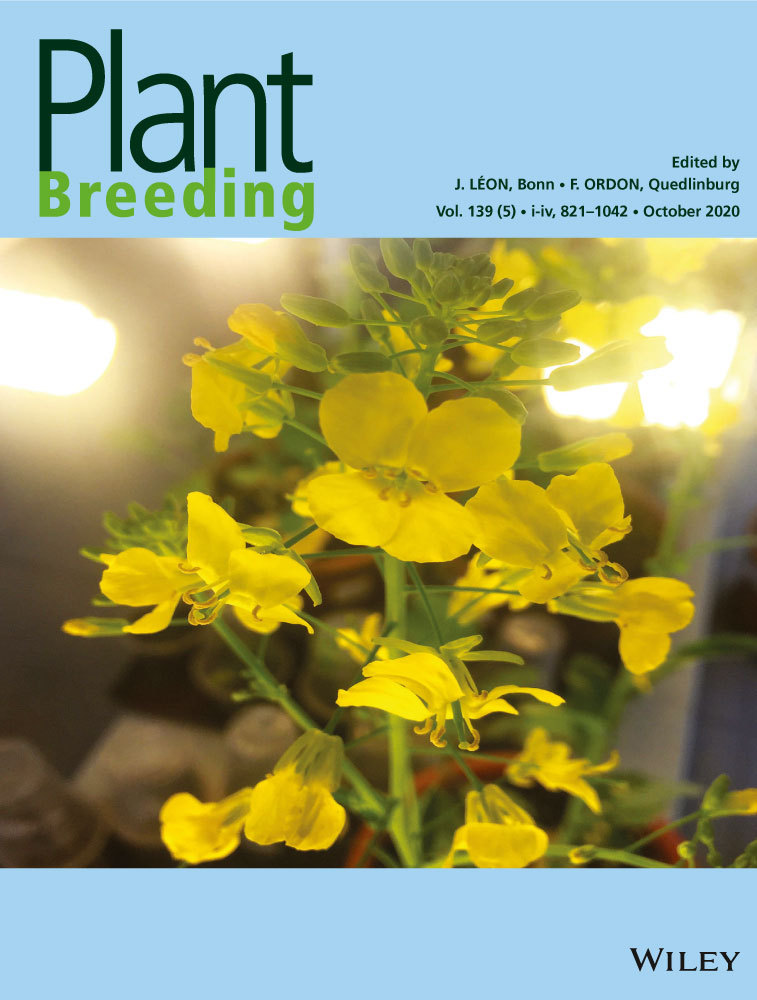Dissection of identical-by-descent segments during the formation of foundation parents derived from Suwan germplasm of maize
Abstract
Suwan germplasm plays important roles in maize breeding in tropical/subtropical regions, especially in southern China. To analyze the genetic characteristics of Suwan maize germplasm, one panel of 73 lines derived from the Suwan population and temperate resources were collected and genotyped using 56,110 single-nucleotide polymorphism (SNP) markers. The results revealed four subgroups, namely, QR273, Ki32, HCL645, and PH4CV, with an average genetic distance of 0.304, varying from 0.001 to 0.370. In addition, many identical-by-descent (IBD) segments were found among Suwan germplasms and their descendants, of which 78 segments were detected only in the QR273 subgroup, 18 segments were detected only in the Ki32 subgroup, 53 and 11 segments were detected only in the PH4CV and the HCL645 subgroup, respectively. Pairwise comparisons showed that 13 segments were common between the QR273 and Ki32 subgroups, 5 segments were common between the QR273 and HCL645 subgroups, 26 segments were common between the QR273 and PH4CV subgroups. Five and 14 segments were common between the Ki32 versus HCL645 subgroups and Ki32 versus PH4CV subgroups. Three segments were commonly detected in the Ki32, QR273, and HCL645 subgroups. Candidate gene analysis showed that 132 genes were located in these segments, wherein seven new candidate genes were associated with flower time (FT)-related traits, which were located in the IBD segments of QR273 or HCL645. Zm00001d033130_T005 and Zm00001d013768_T001 were located in the IBD segments specific to the QR273 subgroup. These two genes function in cell differentiation and flower development and would be very important for the phenotypic variations of the given FP subgroups. These results provide new insights and scientific proof for dissecting the genetic basis of complex traits and the utilization of Suwan germplasm in future maize breeding.
CONFLICT OF INTEREST
The authors declare no conflicts of interest regarding the publication of this paper.




